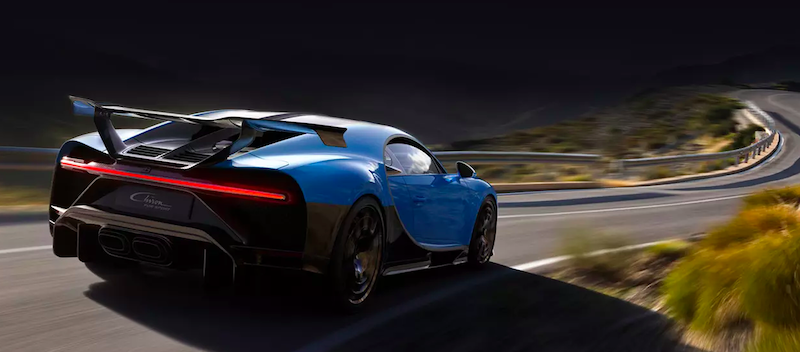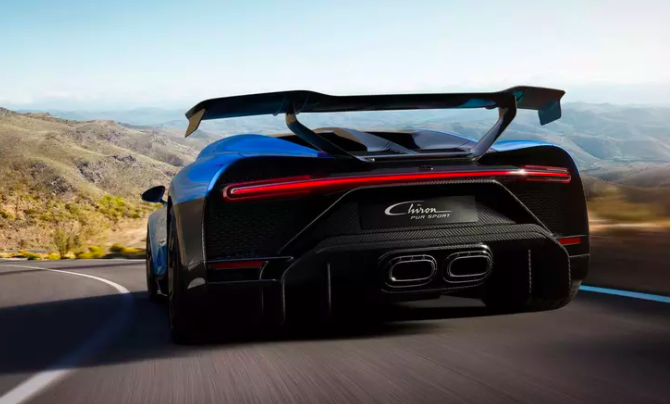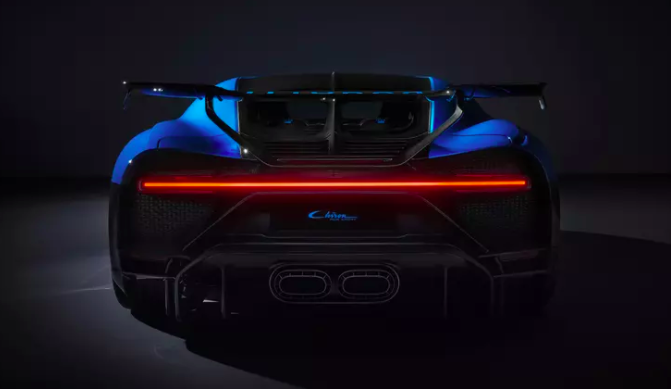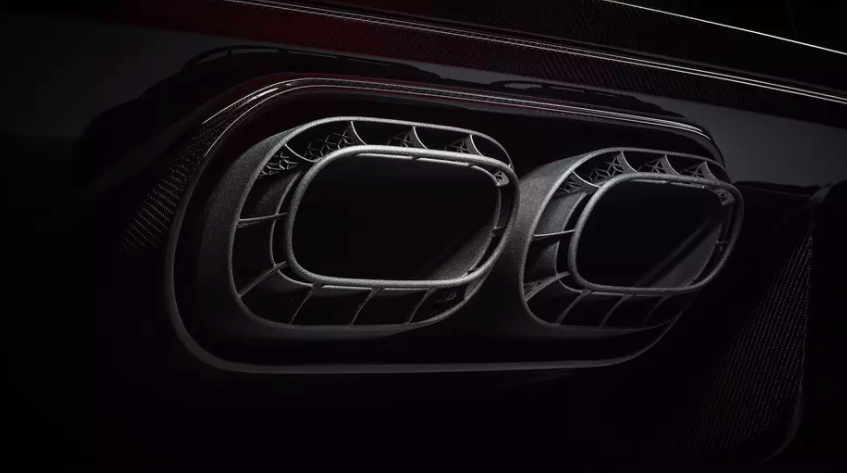French luxury car manufacturer Bugatti, known for its impeccable craftsmanship and extraordinary vehicles claims to become the first vehicle manufacturer to use 3D printed Titanium exhaust covers used on the brand’s latest model the Bugatti Chiron Pur Sport and the Bugatti Chiron Pur Sport 300+. The Titanium exhaust covers are the first visible parts that claim to have been used in the industry and approved for road use made using 3D printing technology.
Bugatti uses a unique 3D printing technology that is only used in the Aerospace industry and employs four 400 watt lasers that fuse powdered Titanium to form the component with wall thickness at just 0.4mm at its thinnest point. To put things into perspective, a mechanical pencil used for writing or drawing commonly has a lead that has a thickness of 0.5mm. Approximately 4,200 layers of Titanium powder are stacked on each other during the process. As a result, the 3D printed exhaust cover which is approximately 22-centimetre long, 48-centimetre wide and 13-centimetre high weighs only 1.85 kgs including the grille and the bracket which is around 1.2 kgs lighter than the cover on the standard Chiron.
3D printing technology not only allows weight savings but also allows the creation of artistic fine ornamental work in the multiple layers of the structure which not only pleases the eyes but can also withstand temperatures of up to 650-degrees Celcius because of the double-layered wall structure. The layered structure acts as a thermal barrier protecting the surrounding components from excessive heat radiation when the engine is under full load. Wherever there is a single surface area Bugatti uses a bionic honeycomb structure to increase the surface rigidity of the walls.
Bugatti has been using the 3D printing technology since 2018 and engineers at Bugatti have already produced special trim covers for the Chiron Sport, Divo, La Voiture Noire, the ultimate Grand Tourisme and the Centodieci using Inconel 718 a hard and lightweight nickel-chromium-molybdenum alloy otherwise used in gas turbines, aircraft turbine blades, rocket engines and space ships. It takes several days to 3D print the component which is then put through a CT (Computed Tomography) scan to detect air inclusions and misprints.
3D printing technology allows engineers to achieve complex forms and thin layers that would not be possible with conventional forging or forming techniques. While it may look relatively simple to some extent it is comparatively fast and there are fewer tool costs. The Titanium printed cover trims are then tested optically for misprints and air inclusions and then the blank is blasted with corundum, a crystalline form of aluminium oxide, a precious gem ideally used for grinding optical glass and is extremely hard with a hardness of 9 on the Mohs scale.
The covers on the Chiron Sport are then finished with high-temperature ceramic paint and the covers on the Chiron Pur Sport and Chiron Pur Sport 300+ retain their Titanium finish. The finished exhaust trims go through another quality check and only the perfect examples are fitted on the car.





